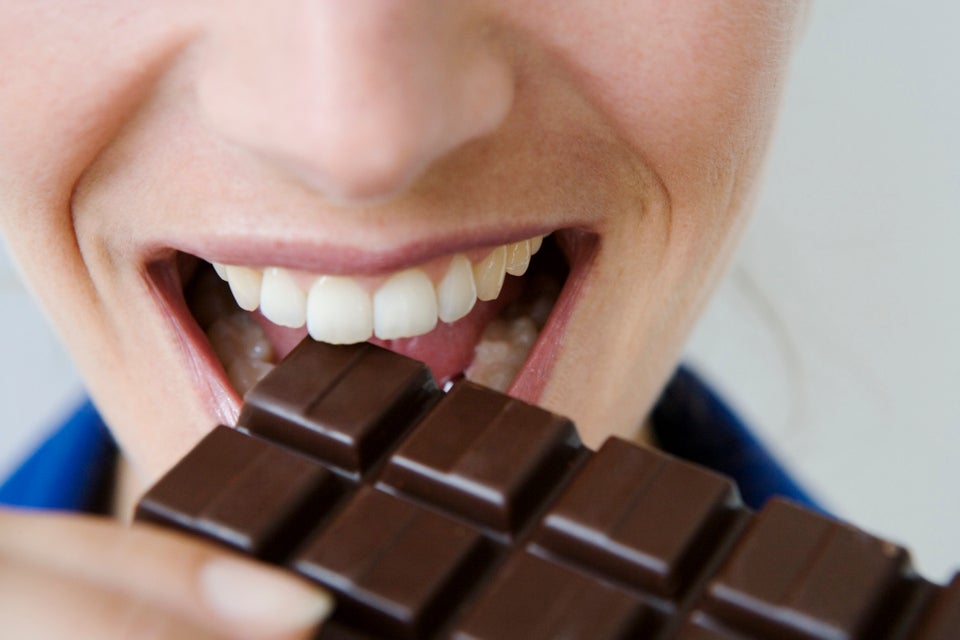
The holiday season can quickly derail your healthy habits if you’re not prepared.
Research shows there’s a connection between the holidays and overeating that leads to weight gain, but smart eating and exercise may help counteract those negative effects. However, busy schedules this time of year often put your well-being at the bottom of your priority list. That’s why it’s crucial to implement a few simple, effective strategies to help stay on track — without restricting yourself or skipping out on the festivities.
We chatted with experts on how to feel your best this holiday season and still keep your health in check. Take a look at their advice below:
1. Go into the season with specific intentions in mind
Set a few healthy intentions before the holiday chaos commences. Is your goal to drink fewer cocktails this season? Limit yourself to one dessert at each party? Exercise three times a week? According to Lindsey Treadway, certified personal trainer and owner of Burn Boot Camp in Ashburn, Virginia, creating goals and reminding yourself why you want to stay on track is key to staying motivated when you feel overwhelmed.
2. At parties, fill up on the most nutritious options first
Instead of hovering over the cheese platter right away, look for some of the healthier options when you first arrive, suggests Jennifer Glockner, a registered dietitian and nutritionist and creator of Smartee Plate.
Glockner advises filling at least half your plate with fiber-rich fruits and veggies, which she said can help keep you full and curb overeating. The rest of your plate should be one-quarter protein and one-quarter grains. If you finish your food and want something else, go ahead and grab your favorite holiday treat so you don’t feel deprived, she explained.
“If you’re going to indulge once or twice, enjoy it and don’t feel guilty,” Glockner said.
3. Drink more water
Carry a reusable water bottle with you and make a point to refill it often throughout the day. Not only is adequate hydration key to keeping your energy up throughout the day, but Glockner said it’s also a great way to prevent overeating. Preliminary research backs this up: A study from the journal Obesity found that drinking two glasses of water before meals can help you feel fuller and consume less food.
4. Exercise in the a.m.
Scheduling a morning sweat session — before the day’s inevitable distractions and commitments arise — is key to ensuring your workout gets done. Plus, “starting the day with a metabolism-boosting workout helps us to burn more calories throughout the day,” Treadway said.
Not only that, but morning workouts energize both your body and brain, which could help you be more focused and productive at work, Treadway added.
5. Pack healthy snacks for the office
To avoid the influx of holiday treats in your workplace ― which Glockner noted are often filled with unhealthy fats and added sugars ― bring your own healthy alternatives. Pack a bag of homemade trail mix (try cashews, almonds, unsweetened shredded coconut and dark chocolate chunks) or sliced apples with cinnamon.
“Treats won’t be as appealing if you’re not super hungry,” Glockner said, “and [your] healthy snack might be just as yummy.”
6. Practice mindful eating
How you eat is just as important as what you’re putting in your mouth when it comes to nourishing your body.
“Mindless eating leads to overeating and choosing the wrong foods,” Glockner said.
Research shows people who eat while distracted (watching TV, for example) are more likely to ignore their body’s fullness cues and end up overeating. Rather than rush through your meals, practice mindful eating. Glockner advises sitting down at a table, turning off technology, chewing each bite thoroughly and savoring your food. You should also pause before taking seconds to get a sense of your fullness cues, and pay attention to how your body feels as you eat.
7. Batch-cook your foods
Meal prepping a full week of breakfasts, lunches and dinners during the holidays isn’t exactly realistic, but there are little ways you can plan ahead. Try focusing on making one or two uncomplicated, nutritious recipes in large quantities. Think veggie chili, soup or a spaghetti squash casserole you can whip up and enjoy as leftovers all week.
“Remember to cut back on salt and use spices and herbs to enhance flavor,” Glockner said. She also recommends incorporating heart-healthy oils and fats, like olive oil and fresh avocados.
8. Take a walk after lunch or dinner
Before you surrender to the post-meal slump, get moving. Treadway said walking after a meal can help facilitate digestion, balance your blood sugar, boost circulation and burn calories (if you walk briskly).
9. Move more throughout the day
“Sitting for extended periods of time has a tendency to decrease our metabolism and therefore our caloric expenditure,” Treadway said.
Small changes to your daily routine, like taking the stairs instead of the elevator or walking around the office every hour, can help burn calories and improve your energy levels, Treadway explained. Getting your steps in has other benefits, too, like increasing circulation, strengthening your bones and improving muscle tone, she added.
10. Fuel up before you go out
“Hungry people tend to make poor food choices and fill up on processed, fatty, salty [and] sugary foods,” Glockner said.
This season, don’t head to the mall, step out for an errand or meet friends for happy hour on an empty stomach. Glockner recommends eating a small, healthy snack beforehand, like a handful of nuts, a piece of fruit or whole-grain crackers with hummus.
11. Do a HIIT workout
If you’re strapped for time, opt for a 20-minute HIIT (high-intensity interval training) session in lieu of an hour at the gym.
“Twenty minutes of high-intensity interval training is quick, effective, and can burn more fat in a much shorter time [than steady-state exercise],” Treadway said. There’s also an “after burn” effect with HIIT, which “is when your body continues to burn calories for up to 48 hours post-workout due to the excess post-oxygen consumption,” she explained.
The best part? You can do HIIT anywhere — no special equipment needed.
12. Make healthy versions of your favorite holiday treats
There are thousands of clever recipes online for clean sweets that taste just as delicious as your favorite desserts, but have only half the calories.
“Just changing one ingredient may make a difference without compromising taste,” Glockner explained. “Try replacing half of the white flour with whole wheat flour [or] substitute half the fat with applesauce or avocado.“
Other options are to use nut milks, bananas and dates as natural sweeteners, or swap refined white sugar for pure maple syrup.
13. Don’t beat yourself up
If you overindulge or get off track, don’t be too hard on yourself.
“One mistake or bad day isn’t going to ruin all of your hard work,” Treadway explained. Her advice? Just remind yourself of your goals and start again the next day.
